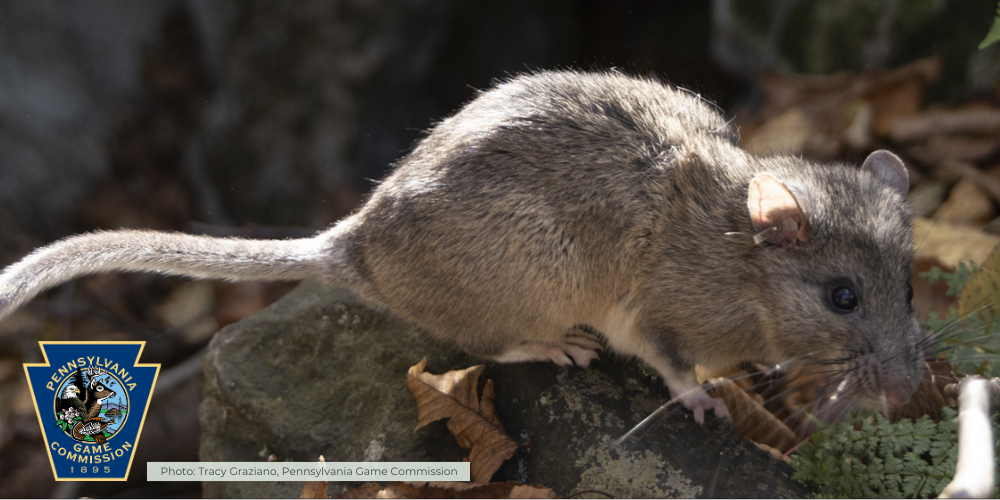
The Kittatinny Ridge is known for its rugged, rocky terrain, continuous forests, and impressive biodiversity; features that make it the perfect home for one of Pennsylvania’s threatened mammal species, the Allegheny woodrat. The Allegheny woodrat is little-known and seldom-seen species in Pennsylvania. In fact, when most of us hear the word “woodrat,” our mind probably jumps straight to the critters we associate with sewer systems, the spread of diseases, and maybe even the ROUS (Rodents of Unusual Size) in the fire swamps of The Princess Bride. The Allegheny woodrat is not closely related to the non-native Norway rat we picture. Not even a little bit! Instead, Allegheny woodrats are our native species of packrat that are endemic to the Appalachian Mountains and found nowhere else on earth.
Allegheny woodrats are specialists in surface rock habitats, where they build hutches (nests) and caches (piles of food) deep within the cracks of the rock. They are incredibly skilled at navigating the rocks and are primarily nocturnal, so they do it all at night! Allegheny woodrats are dietary generalists that do not hibernate and eat a wide variety of fungi, leaves, berries, and seeds depending on what is seasonally available. They were once closely associated with the American chestnut but now rely primarily on hard mast such as acorns and hickory nuts as well as dried fungi and plant material to survive the harsh winter months. Like other packrats, Allegheny woodrats are known for their collecting tendencies and will often add non-food items they encounter, such as candy wrappers and shotgun shells, to their caches, too.
Though Allegheny woodrats were once plentiful throughout the Appalachian Mountains, precipitous population declines have been documented across their range. Pennsylvania is no exception, with about 70% of our known populations now extirpated, according to the most recent statewide survey completed in 2022. Many factors have likely contributed to this hefty decline, but the three main drivers are decreased food availability, habitat fragmentation and loss, and disease. Allegheny woodrat decline was first noted soon after the disappearance of the American chestnut, a reliable and consistent mast producer. Though acorns likely filled the gap in the woodrat diet, the introduction of the spongy moth in the 1960s led to oak defoliation and a subsequent decline in acorn production across much of the Allegheny woodrat’s range. Deer, turkey, and black bear populations also increased over time, leading to added food competition. At the same time, increased human development fragmented and destroyed Allegheny woodrat habitat, isolating small populations and leading to inbreeding and significantly decreased genetic diversity. Allegheny woodrats are typically associated with forest interior, but fragmentation brought edge habitat closer to woodrat populations and promoted the presence of edge specialists such as raccoons. This is especially problematic for Allegheny woodrats because raccoons carry a parasite deadly to woodrats, raccoon roundworm, and excrete the parasite’s eggs in their feces. Allegheny woodrats often collect and cache raccoon feces that are filled with seeds, potentially inoculating their den with the deadly parasites.
Recovery efforts to address the drivers of Allegheny woodrat decline are ongoing and range from emergency actions taken to prevent federal listing and extinction to long-term habitat management that will support Allegheny woodrats and the diverse community of wildlife that depend on surface rock communities into the future.
For more information about Allegheny woodrats, please visit the Pennsylvania Game Commission’s website: Allegheny Woodrat | Game Commission | Commonwealth of Pennsylvania